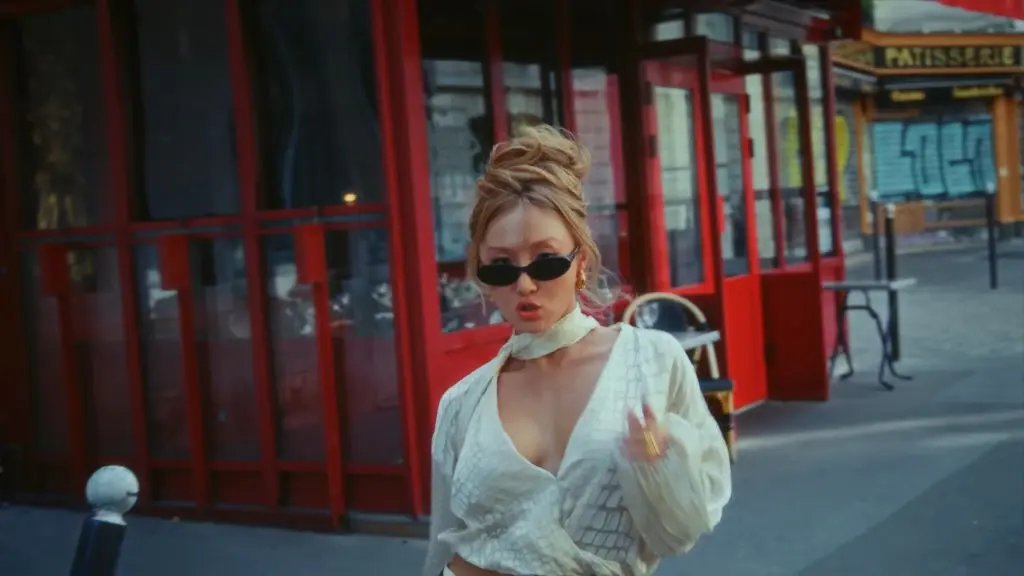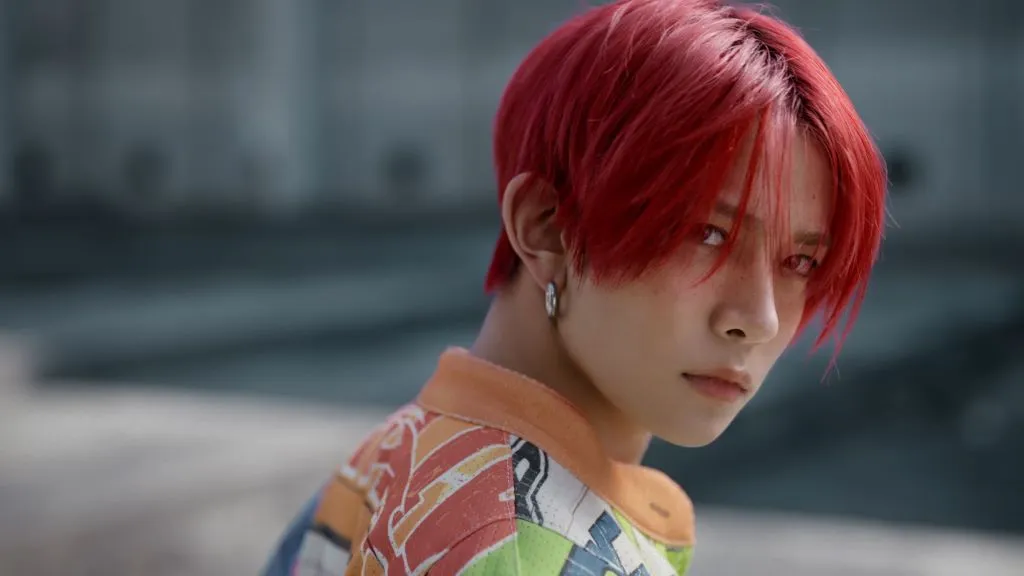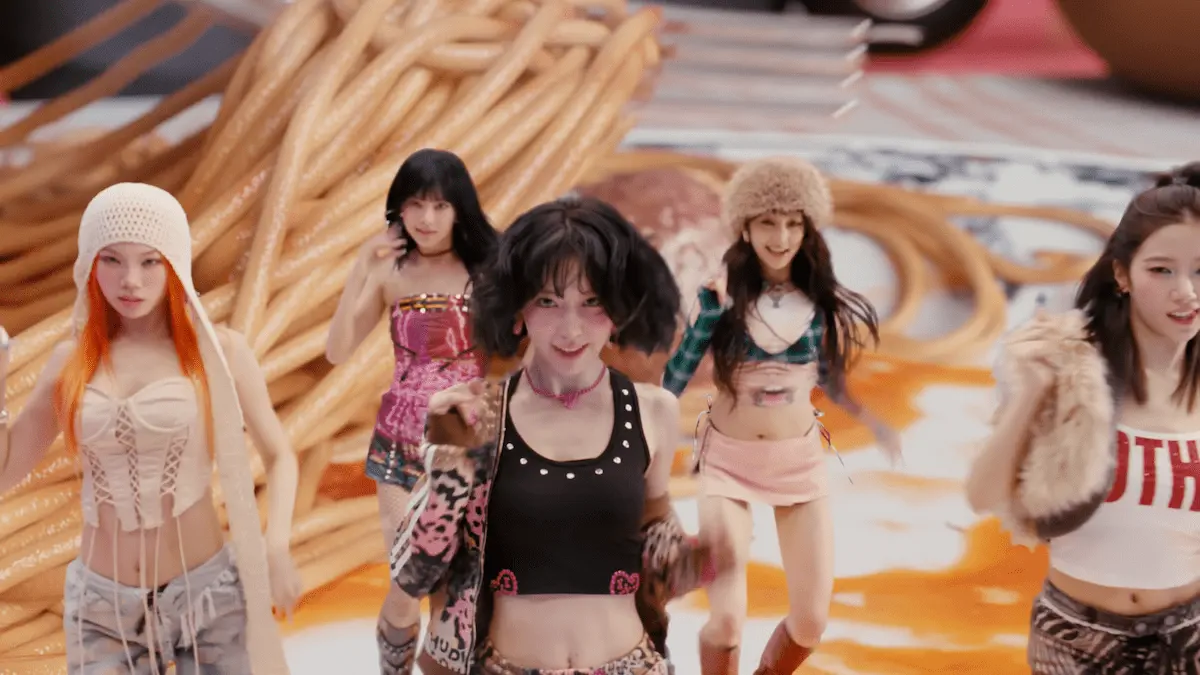[HWASA] 'I Love My Body' Explained: An Anthem of Unapologetic Self-Love
When Hwasa moves, the industry listens. Her first release under PSY's P NATION, "I Love My Body," isn't just another comeback; it's a vibrant, funk-drenched declaration of independence. In a world that relentlessly scrutinizes, Hwasa throws a party for one—and everyone who's ever felt out of place is invited. This MV is a masterclass in turning criticism into confetti. Let's get into it.

Source: Official Hwasa YouTube (© P NATION)
Table of Contents (Find Your Story)
Quick Summary: The Vibe Check
“I Love My Body” is a joyfully defiant soul-pop anthem that sees Hwasa swapping past pain for pure celebration. The MV is a retro-infused visual feast where she confidently owns every frame, turning the very concept of being watched into an act of power. It’s a direct, unapologetic response to years of public scrutiny, delivering a timeless message of body positivity with a groovy, infectious, and utterly Hwasa-esque flair.
Credits
The Story You See on Screen
The narrative of "I Love My Body" is less a linear plot and more a powerful, repeating visual thesis: self-love starts and ends with you. The MV opens with Hwasa in her private space, confidently admiring herself in the mirror (00:15). This isn't vanity; it's the foundational act of self-acceptance that fuels the entire video. This mirror motif bookends the MV, creating a perfect loop that says the journey to confidence begins internally, without seeking external validation.
From this private moment, her confidence explodes into public spaces. She transforms a mundane bathroom, a hair salon, and even a parking garage into her personal stages. Each scene is a vibrant vignette of Hwasa and her dancers celebrating themselves, completely unbothered by any potential judgment. The settings are deliberately ordinary, driving home the message that you don't need a special occasion or a grand stage to feel good about yourself—that power is portable.
The story culminates in a playful, almost theatrical finale where Hwasa's car is surrounded by police cars, which then join her in a synchronized "dance" (02:35). This surreal, joyful moment feels like a visual metaphor for disarming authority and criticism. Instead of being stopped or reprimanded, she co-opts the forces of control and makes them part of her celebration. It's a cheeky, triumphant conclusion that reinforces the idea that true confidence can't be contained or policed.
Lyrics & meaning
Lyrical Story & Narrative
The lyrical journey of "I Love My Body" is a masterclass in radical simplicity. The verses articulate the exhaustion of trying to meet society's impossible beauty standards. Lines like "This and that, my hair, my look, even my ridiculous gestures" create a laundry list of the things women are judged for daily. It speaks to the constant, low-level anxiety of being perceived and the impossible task of pleasing everyone. The question, "There are hundreds of standards, I wonder which one to follow," isn't seeking an answer; it's highlighting the absurdity of the question itself.
This song represents the triumphant final chapter in Hwasa's public self-love trilogy. If "Maria" (2020) was about healing from the wounds of public hate, and "I'm a B" (2021) was about building a defensive wall, then "I Love My Body" is the victory party. The battle is over. The lyrics are no longer defensive or wounded; they are purely declarative. It's the emotional exhale after a long fight, choosing to focus on joy rather than the noise.
The narrative isn't just about the physical body, as Hwasa herself clarified in a Forbes interview. It’s about the "self-esteem inside of my body." The lyrics reject the separation of mind and body, arguing that to love one is to love the other. It's a holistic vision of self-acceptance where physical confidence and mental well-being are one and the same.
The Intent Behind the Hook & Cultural Nuance
The genius of the hook lies in its stark, almost brutalist simplicity. The line, "I love my body, that's my body," delivered in a spoken, near-monotone cadence, is deliberately anticlimactic. In a genre known for explosive choruses, this choice is a radical statement. It refuses to be performative. Hwasa isn't trying to convince you with soaring vocals; she is stating an irrefutable fact. This transforms the line from a simple lyric into a powerful, hypnotic mantra, making the message impossible to ignore or misinterpret.
There's a subtle but brilliant layer of Korean wordplay at work. The word for "body" (몸, *mom*) sounds very similar to the word for "mind/heart" (맘, *mam*). This sonic similarity creates a subconscious link for Korean listeners, reinforcing the idea that loving your body is inseparable from loving your mind and your true self. It's a clever, culturally specific nuance that deepens the song's holistic message.
This track is a direct contribution to South Korea's burgeoning "Escape the Corset" (탈코르셋) movement, a feminist pushback against oppressive beauty rituals. By releasing a song with such an explicit title and message, Hwasa, who has defied conventional K-Pop beauty standards since her debut, positions herself as a powerful figurehead for this cultural shift. The song provides a mainstream anthem for a movement built on rejecting the very standards the K-Pop industry often perpetuates.
Beneath the Surface: A Multi-Layered Analysis
1. Fashion Deconstruction: More Than Just Clothes
The wardrobe in "I Love My Body" is a weaponized celebration of self. Hwasa’s styling deliberately reclaims fashion as a tool of self-expression rather than a method of conforming or hiding. She dons a series of bold, figure-hugging outfits, from a stunning, vibrant orange dress (00:52) to playful, colorful athleisure. Each look is chosen to highlight her silhouette, not disguise it, directly challenging the "slim-figure" ideal dominant in K-pop.
This approach feels deeply connected to the 70s and 80s soul/funk era the video emulates. Artists like Diana Ross and Chaka Khan used fashion to project power and unapologetic presence. Similarly, Hwasa's use of bright, saturated colors and confident styling isn't just about looking good; it's about taking up space, both visually and culturally. The looks are fun, a little loud, and entirely on her own terms.
By rejecting the "safe" pastels or the dark, edgy concepts often assigned to idols who don't fit the traditional mold, Hwasa carves out a new space. The styling is a visual extension of the lyrics: it’s joyful, it’s confident, and it makes absolutely no apologies for what it is. It's a masterclass in using wardrobe to amplify a message.
2. The Sound: A Producer's Perspective
Working with P NATION's PSY and Yoo Gun-hyung (of "Gangnam Style" fame), Hwasa crafted a sound that feels both classic and rebellious. The track is built on a foundation of 70s soul and funk, immediately evident from the prominent live brass section and the groovy funk bassline that drives the song (kick-in at 00:15). In an industry saturated with trap beats and synth-heavy EDM, this choice of organic, live instrumentation is a statement in itself. It grounds the song in a physical, human feel that perfectly mirrors its embodied message.
The production intentionally references the golden age of Motown and artists like Earth, Wind & Fire. These genres were pioneered by Black artists who often challenged mainstream standards through their sheer talent and charisma. By aligning herself with this musical lineage, Hwasa positions "I Love My Body" within a history of music as a tool for liberation and cultural expression.
Structurally, the song cleverly avoids the typical K-Pop build-and-drop formula. It maintains a steady, mid-tempo groove from start to finish. This "anti-climax" structure is a musical reflection of the core message: self-love doesn't require a dramatic transformation or a climactic reveal. It's about finding joy and confidence in the steady, consistent rhythm of being yourself.
3. Cinematic Language: Reading Between the Frames
The entire MV, directed by the acclaimed VM Project Architecture, is a love letter to retro aesthetics. The use of a subtle **film grain effect** and a warm, saturated **color grading** instantly evokes the feeling of a vintage 70s film. This isn't just a stylistic choice; it imbues the video with a sense of timelessness, suggesting that the message of self-love is not just a fleeting trend but an enduring truth.
The recurring motif of the **mirror** is the central pillar of the video's visual language. Hwasa isn't looking into the mirror seeking flaws; she's looking at herself with admiration and affirmation (00:15, 02:45). The camera often takes the perspective of the mirror, forcing the viewer to see Hwasa as she sees herself. This clever directorial choice breaks the dynamic of the passive "male gaze" and instead centers Hwasa's own perception of herself as the only one that matters.
The final scene with the dancing police cars (02:35) is a brilliant piece of surrealist commentary. It's a visual gag that carries significant weight, symbolizing the disarming of authority and judgment through radical joy. It's a powerful and humorous way to say that criticism has no power here, turning a symbol of control into a backup dancer in her celebration of self.
4. Choreography & Performance: The Story in Motion
The choreography, crafted by the legendary **Lia Kim of 1MILLION Dance Studio**, is a physical manifestation of the song's message. The movements are grounded, powerful, and centered on self-possession. The key point-move, where Hwasa and her dancers point directly at their own bodies during the chorus (00:48), is a powerful act of physical reclamation. They are visually and literally claiming ownership of their forms, refusing to let them be defined by anyone else.
Lia Kim's choreography deliberately includes moves that are goofy, ungraceful, and unapologetically fun. Exaggerated hip thrusts and silly facial expressions break the unspoken K-Pop rule that female idols must look perfectly sleek and elegant at all times. This embraces a less polished, more human energy, reinforcing the theme that you don't need to be flawless to be worthy of love and celebration.
Crucially, the dance is accessible. Unlike the hyper-complex choreography common in K-Pop, the core moves of "I Love My Body" are simple enough for anyone to join in. This democratic approach made the dance challenge a global phenomenon, inviting people of all ages, sizes, and skill levels to participate. It turned a performance into a communal act of celebration, perfectly amplifying the song's inclusive message.
Fan Takeaways
For fans, "I Love My Body" felt like a collective sigh of relief and a cheer of victory. After years of defending Hwasa from malicious comments about her appearance, this song felt like she was taking the narrative back once and for all. It wasn't just a song; it was vindication. The online response was overwhelming, with fans sharing personal stories of how Hwasa's confidence inspired their own journeys toward self-acceptance. The hashtag #ILoveMyBody became a repository of empowerment.
The song became an instant mantra. Across TikTok and Instagram, fans—especially those who rarely see themselves represented in mainstream media—created videos pairing the chorus with their own moments of joy and confidence. It resonated deeply with international fans who have long admired Hwasa for breaking the mold. Comments sections were flooded with messages like, "She's the role model I needed when I was younger," and "Thank you for making me feel seen."
What makes this release so special to the fandom is its pure, unadulterated joy. While we loved the raw vulnerability of "Maria," seeing Hwasa so happy, so free, and so utterly unbothered in this MV felt like the happy ending she truly deserves. It’s a celebration not just of her body, but of her resilience. And that’s a party every fan was thrilled to attend.
Frequently Asked Questions (Q&A)
What is the main message of Hwasa's "I Love My Body"?
The core message is a radical and joyful declaration of self-acceptance and body positivity. It's a direct rejection of restrictive societal beauty standards, arguing that true confidence and beauty come from within, not from external validation. The song serves as an anthem for anyone who has ever felt judged for their appearance.
How does this song connect to Hwasa's previous solo work?
"I Love My Body" is seen as the final, celebratory chapter in a trilogy of self-love. While "Maria" (2020) dealt with the pain of criticism and the process of healing, and "I'm a B" (2021) was about building a defensive shield, this song represents the victory lap—a pure, joyful celebration now that the battle has been won.
Why is the song's production style significant?
The song's 70s soul and funk-inspired production, with live brass and organic instrumentation, is significant because it sonically aligns Hwasa with a history of empowering music pioneered by Black artists. It also sets the track apart from the trendy, electronic-heavy sound of modern K-Pop, giving the timeless message a correspondingly classic and grounded feel.




Comments